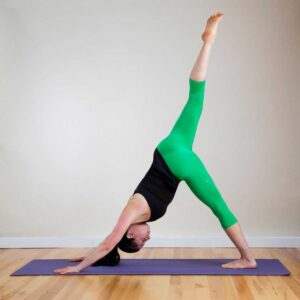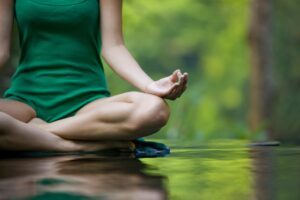Yoga rules for back pain
Yoga https://www.julianalucky.com/post/proven-8-ways-to-make-school-morning-routines-easier is considered one of the most beneficial physical cultures aimed at strengthening the body and increasing strength and endurance. It is often advised for the prevention of musculoskeletal disorders, particularly back pain. There is a set of asanas, which contributes to strengthening the muscles along the spine, helps to form a straight posture and fixes the correct position of the spinal column. Before starting the practice, it is recommended to undergo an examination by a doctor to rule out serious diseases that may be the cause of pain.
Yoga rules for back pain
Pain in the back and lower back most often occur with a sedentary lifestyle and prolonged sitting at a computer or desk. Strengthening back muscles through yoga will not only help make them stronger, but also lengthen them, returning them to their proper condition.
The following principles are recommended to adhere to during classes:
When performing asanas, it is necessary to monitor the correctness of breathing: it should be even and deep, contributing to the relaxation of the muscles.
The attention should be concentrated on the movements. If possible, remove all the objects, which can distract you from the process. You should also avoid extraneous thoughts and worries that may interfere with the exercise.
To get the desired result it is important to train regularly, at least 3-4 times a week. In this case the pain will be eliminated, and the risk of its recurrence will be minimized.
If severe pain, discomfort, fatigue and dizziness appear during the exercise, you should stop the training. Training through force will give the opposite of the expected effect.
When practicing on your own, it is important to perform all movements correctly, therefore it is recommended to perform the first trainings in front of the mirror to be able to trace the process from the side.
A complex of yoga postures for back pain
To form the correct posture and prevent the appearance of back pain, the following yoga poses are used:
Forward bends.
Stand up straight, put the arms back and interlock the fingers. Make a strong inhale, expanding the chest area. As you exhale, soften the knees, squatting slightly, and tilt the body from the hips down. Arms are lifted at the same time, keeping them completely straight and without unhooking the palms. Your chest should be brought close to the knees, without straining the muscles of the neck. Take five breaths and return to the starting position.
Dolphin pose.
Get on the mat on all fours, knees and forearms resting on the floor. Head down between the hands and push the pelvis up, shifting the fulcrum on the feet. Body forms a right angle, bending at the hip joints. Hold the position for five breaths, then relax.
Reverse prayer pose.
Kneeling on the mat, put the buttocks on heels, taking the most comfortable position. Put your hands behind your back and put your palms together, with the inner side facing each other. Point fingers up. Hold yoga pose for five equal breaths, then return to the starting position.
Eagle pose.
Stand up straight, lift right knee up, helping yourself with hands. Cross right foot with left limb, trying as much as possible to wrap it around the leg and get a grip on the shin. Arms are crossed in front of the face, interlocking them at the elbows, wrists, and hands. Bend the left leg slightly at the knee and hold the position for five breaths. Then, stand up straight and repeat asana with the other leg.
Bow pose.
Place your belly down on the mat, stretch arms along the body, take hold of the ankles with the palms of the hands and bend upward, keeping the balance on the belly. Hold for five breaths and relax.
Cow pose.
Kneel on the mat with buttocks on heels. Put your left hand behind your back at the side, right hand stretches up and down over your shoulder. Pull palms towards each other and interlock fingers. Arch your chest forward so that your palms don’t touch your back. Hold the position for five breaths, then change hands.
Needle and thread.
Get on all fours, putting the knees on the floor and palms forward beyond the shoulders. Lift the right arm up through the side, turning the body. Then lower it down in a wide amplitude, passing it under the body and twisting the body following to the left side. The right hand should be parallel to or resting on the floor. The left palm supports the body while remaining extended and placed on the floor in front of the head. Hold this position for five breaths, then repeat this yoga pose the other way.
Cross over.
Lie on the floor with your stomach, lift your shoulders off the floor and extend your left arm to your right side and your right arm to your left. The back of the palms are facing upward. The hands should be perpendicular to the body; to increase stretching, you can wiggle the wrists by stretching the fingers farther to the sides. Hold the pose for five breaths, and then change the arm crosshairs.
Regular performance of the asana complex will help relieve back pain, strengthen muscles and form a beautiful even posture.
Yoga practice for lower back pain
To prevent the occurrence of pain in the lower back, it is recommended to systematically practice the following yoga postures:
Palm pose.
Stand up straight, spreading the feet wider than the shoulders. Gaze is directed straight, with inhalation understand the hands up, leading them through the sides and turning the inner surface of the brushes to each other. At the upper mark of the amplitude, don’t put your palms together, but leave them shoulder width apart. Lift on your toes, slightly throw your head back and look up. Three to five breaths, then relax and repeat the yoga pose.
Rabbit pose.
Kneeling, buttocks down on heels. Extend your arms above your head, palms facing forward. Bend over, touching the floor with palms and forehead, keeping the buttocks pressed against the legs. Hold the position for five seconds, then straighten.
West pose.
Lie on back, put hands and feet on the floor and push hips up so that the body makes an arch. Hold the position for 20 seconds and then relax.
Yoga is an excellent means of preventing many diseases. It strengthens muscles, helping to fight pain. But if you feel a lot of pain during the practice, you should stop the practice and see a doctor to rule out any serious diseases and adjust the exercise.